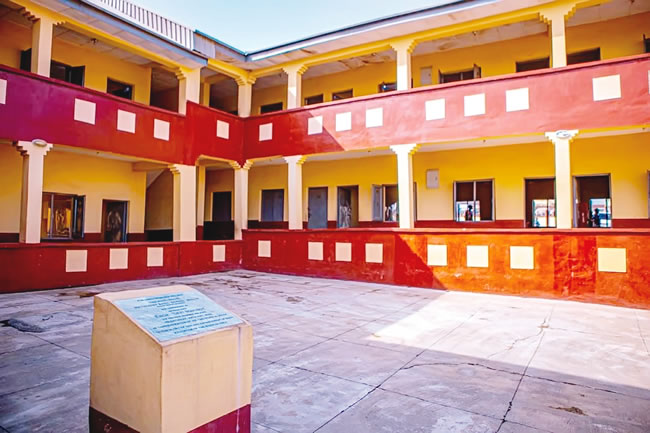AHEAD of the next governorship election in Oyo State, the jury is out assessing the administration of the incumbent governor, Mr Seyi Makinde. The governor had set himself up for variegated assessment with the declaration of his second term bid. But the jury is justified as it is a norm to assess how a person has performed on a task before giving them another. This is apart from the fact that public offices are held in trust and the people must ask the managers of their resources to give account of their stewardship.
As the clock ticks for the current four-year term of Governor Makinde and with campaign for second term about kicking off, the time is surely ripe for various stakeholders to do a critical analysis of the government’s strides. Objective analyses of an administration by certain stakeholders usually help shape opinions and guide people in making electoral decisions.
At his inauguration as governor on May 29, 2019, Makinde promised to focus on education, agriculture and food security, health care, infrastructure, youth empowerment, job creation, economy, security, social inclusion and protection. For any observer, therefore, the Makinde administration is best assessed based on its four pillars of security, education, health and economic expansion. The four-point agenda is said to be drawn from a 25-year development plan for the state. Owing to leadership failures over the years, Nigerians tend to greet agenda and manifestos of politicians with some pessimism. While there are those who simply fail in living up to their promises to the people who voted them into office, others adopt propaganda to blow the little they have done out of proportion. Amid the cacophony of voices about performance of an administration, quite a number of people still look up to the media as a strong voice to guide their electoral choices.
Ahead of elections, the media is expected to inform, educate, enlighten, mould opinion and set agenda. In living up to its roles, the top echelon of the media, that is, the Nigerian Guild of Editors (NGE), last Saturday, visited Oyo State for an on-the-spot assessment of the strides of the governor Makinde administration. It was clear that the managers of newspapers, magazines and television and radio stations meant business as they turned out in their numbers for the tour of project sites in the state. Interestingly, the governor himself was the anchor man for the tour. Minutes past 8.00 a.m., the editors arrived at the Oyo State government secretariat which was the starting point of the tour. Hosting the NGE at the Executive Council Chambers of the Governor’s Office just before takeoff, Governor Makinde listed the touchdown locations for the tour to include the Methodist Model School, Bodija, Ibadan; the state headquarters of the South-West security network code-named Amotekun; the 65-kilometer Moniya-Iseyin road, 78-kilometer Iseyin-Fapote-Ogbomoso road; the 12-kilometer ongoing Apata-Bembo-Jankata road in Ibadan; the ongoing dualisation of Airport Road, Ibadan and the 500,000-capacity aviation fuel storage facility being undertaken by the state at the Ibadan airport. The choice of the projects seemed strategic as they basically touched on the four-point agenda of the Makinde administration.
The first port of call was the Methodist Model Primary School, Bodija. On hand to tell the NGE about the facilities in the school was the chairman of the State Universal Basic Education Board (SUBEB), Dr Nureni Adeniran. Leading his guests around, Adeniran, alongside Makinde, said that the facilities in the school were modern and of high quality. The NGE looked impressed as the explanations from Adeniran went on. Just before the train left the school, a woman caught the governor’s attention as she narrated how she usually trekked with the governor’s campaign train during the 2019 campaign and had yearned to have a close contact with Makinde after he became governor. The woman’s tenacity paid off. A crowd of Bodija market women, with some holding up vegetables and Ewedu, also gathered at the entrance to the school. They sang joyfully as the governor associated with them before bidding them bye.
The convoy travelled several kilometers to the next stop, the Amotekun state headquarters in Moniya. The governor and the NGE members were welcomed with a parade by men of the Amotekun Corps. The commandant of the corps, Olayinka Olayanju, thereafter, showed his guests round the administrative block, the operational block and the founders’ hall within the headquarters. Also on display were arms and ammunition, as well as amulets and other traditionally fortified security wears. Responding to questions from the NGE members about the spread of equipment and personnel to tackle crimes, Olayanju said some local government areas had up to eight vehicles while there were plans to have communication equipment installed in the vehicles. On personnel, Olayanju said the agency was set to add another 500 to the 1,500 personnel recruited at the inception of the agency. Beyond using arms and ammunition, Olayanju said the agency also utilised alternative dispute resolution mechanism to address farmers/herders clashes. He noted that the agency recently got N500,000 for a female farmer. Asked about the state getting armoured vehicles for the agency, Olayanju, speaking alongside the Special Adviser to the Governor on Security, Mr Fatai Owoseni, said the state was emphasising intelligence and synchronised communication among security agencies to fight crimes. While noting that armoured vehicles are expensive, Olayanju said the state is also handicapped as it is yet to get approval for AK-47 rifle let alone armoured vehicles.
ALSO READ FROM NIGERIAN TRIBUNE
Next was a long drive on the 65-kilometer Moniya-Iseyin road which the governor had boasted had no pothole throughout. It was indeed a smooth drive on the road to Iseyin where the governor made a brief stop to tell the guests the economic importance of the road and how it has helped link Ibadan to the Oke-Ogun area of the state, with Iseyin serving as a nodal town for the Oke-Ogun zone. Upon getting back on the bus, the guests quickly gulped some drinks to quench their thirst fuelled by the blazing sun. After about 17 kilometres’ drive on the newly constructed Iseyin-Ogbomoso road, there was a stop where the governor said the road will link Iseyin to the Ogbomoso axis of the state. During the stop, the governor explained that his administration was focused on road projects that would integrate the five geopolitical zones of the state. While agreeing that inner and feeder roads across the state are in a deplorable state, Makinde faulted the past administration for doing shoddy jobs that had made several inner roads dilapidated. “If they fixed the inner roads well before we came in, they won’t all be bad now,” Makinde said. He, however, said attention would be shifted to fixing the inner roads once the inter-zone link roads are done.
Corroborating the state’s plan for inner roads, the Commissioner for Public Works and Transport, Professor Dahud Shandoyin, also said: “Right now, we have completed 98.11 kilometers across the state. We are hoping that on or before May 29, 2023, we will commission more. For the feeder roads, our governor has mandated the Oyo State Road Maintenance Agency (OYSROMA) to start working on the rehabilitation of potholes across the state. As we speak, they have gone round; they have taken the Bill of Engineering Measurement and Evaluation (BEME) for all the roads which will constitute the phase one, and they are now going to the field to do the needful. We realised that once we consolidate on what we are doing, our focus will be more on these feeder roads, access roads, so that we can have passable feeder roads all over the state. Give us the next two months because of the rainy season. By the last week of November, you will see changes all over the Ibadan metropolis, to start with.”
Not long after, there was another stop at a primary healthcare centre around the palace of the Aseyin of Iseyin. Governor Makinde said the Ode Oba Primary Healthcare Centre (PHC), Iseyin, is one of the 299 completed PHCs in the state. The governor said: “We will see a model PHC at Iseyin because our target is to have one functional PHC in all the 351 wards in the state. The idea is for people not to go beyond one-kilometer radius from wherever they are leaving to access primary healthcare facilities.”
It was back to Ibadan after the PHC assessment. Arriving in Ibadan at about 1.00 p.m., checks were made on the ongoing dualisation of the Airport Road, Ibadan and the 500,000-capacity aviation fuel storage facility and Lere Adigun Estate, Basorun.
Speaking on the importance of the airport projects, Makinde said: “The road is being dualised and the airport itself is central to expanding our economy. I tell people that if you want to expand your economy and the airport only has one flight in a day, it does not tell a good story. As a matter of fact, we believe aircraft should be landing and taking off every 30 minutes in the airport if it must have an impact on the economy. Once I had the opportunity of talking to one of the top officials of Air Peace. They complain that they cannot carry a full-passenger load to Ibadan because they have to take enough fuel to bring passengers and take them back to Abuja.
“So, we have been able to put an aviation fuel storage and dispensing facility in there. Once all of that is done, the only thing that will remain to make the airport fully competitive is the extension of the runway from 2.7 kilometers to 3.3 kilometers. Once we are able to do that, we can do other necessary things around there.”
At Lere Adigun Estate, Makinde explained that the project was done through a land swap deal and a private-sector driven arrangement had been put in place to ensure proper maintenance of the estate.
He said: “Some of my colleagues have said Gwarimpa Housing Estate in Abuja is a model estate built by the Federal Government.
“But for me, I felt that all the government housing estates always start well but end up being a failure because the government would be maintaining the roads and drainages but after some time, they would become conduits for civil servants and political officeholders to exert their influence.
“But we felt that the government can provide a conducive environment. We can do the acquisition as a government but the infrastructure and maintenance must be private-driven. Once you do that and the project is handed over to the private sector, if the people living in the estate really know what is good for them, they will maintain it.
“So, what we really did was to put in place a land swap deal. When we gave it out to the partner, it was N15 million per plot about one year and two months ago and now, it is about N50 million because Lagosians are putting pressure on us. It has been a successful model for us. The government is not spending any money to put up infrastructure or for maintenance.
“With that model, we have been able to solve the problem of some people having 10 to 15 plots just because they are the ones allocating those plots. This is strictly a private sector-driven process.”
The governor equally explained how his administration has been able to achieve massive success in reducing infrastructure deficit in the state through the Alternative Project Funding Approach (APFA), saying: “Some of the projects you will be seeing have been carried out through the Alternative Project Funding Approach which has been able to sanitise the mode of delivery in the state.”
WATCH TOP VIDEOS FROM NIGERIAN TRIBUNE TV
- Relationship Hangout: Public vs Private Proposals – Which Truly Wins in Love?
- “No” Is a Complete Sentence: Why You Should Stop Feeling Guilty
- Relationship Hangout: Friendship Talk 2025 – How to Be a Good Friend & Big Questions on Friendship
- Police Overpower Armed Robbers in Ibadan After Fierce Struggle







